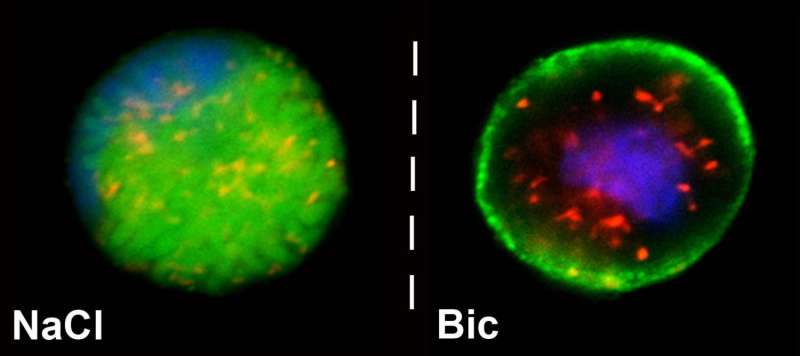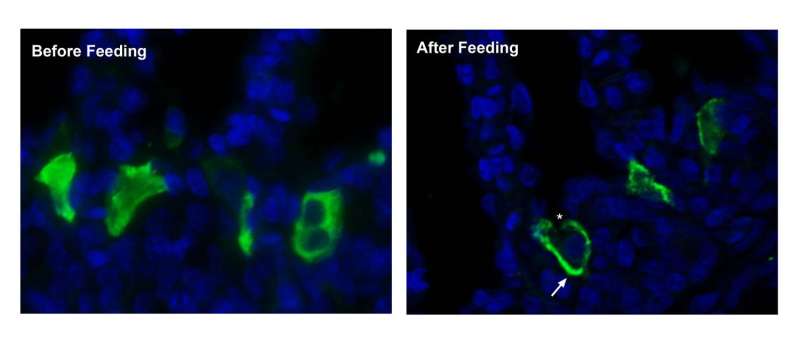Proton pump found to regulate blood pH in stingrays

Researchers at Scripps Institution of Oceanography at the University of California San Diego have discovered the same enzyme used by "boneworms" to dissolve whale carcasses, and that helps promote photosynthesis in corals, also regulates blood pH in stingrays. The study could help scientists better understand the enzyme's function in human kidneys to regulate blood and urine functions.
To analyze how the enzyme works at the cellular level and apart from the animal's whole endocrine system, Scripps graduate student Jinae Roa isolated cells from stingray gills and exposed them to varying pH conditions. Enzymes, which are proteins inside organisms, help control critical life processes.
She and Scripps marine biologist Martín Tresguerres found that when pH was elevated and more alkaline, the enzyme-called a proton pump and abbreviated VHA-activated by moving from the cell's inner cytoplasm to the outer membrane to push the excess acid out of the cell. The cellular activity results in the transport of acid to the blood and the return of blood pH to normal levels.
Tresguerres and his team have spent recent years analyzing the varying functions of VHA in a range of organisms from bone-eating worms to corals. With Scripps professor Greg Rouse, Tresguerres first discovered that Osedax, a genus of mouthless and gutless "boneworms," uses the acid-secreting enzyme to dissolve whale bones to access the nutrients inside. More recently his research team found the enzyme inside corals. In corals it promotes photosynthesis in cooperation with the symbiotic algae that live inside the cells to help provide the food needed to survive in warm, nutrient-poor environments.

"We are finding that depending on where the enzymes are located in the cell their ultimate function is different," said Tresguerres, a senior author of the study.
The findings, published in the August issue of the American Journal of Physiology - Cell Physiology, show that the detection of blood pH levels is happening directly in cells that are specialized for pH regulation, and not in the brain or by hormones.
The Scripps researchers believe that the proton pump may have a similar function in stingrays and in human kidneys to regulate blood pH. However, keeping individual cells alive outside of the human body to study exactly how the proton pump works is extremely difficult.
"Rays are a great model organism, they have big cells that can be studied in isolation apart from their whole body," said Roa, the study's lead author whose PhD research is focused on understanding how pH is sensed and regulated in rays, sharks, hagfish, and other fishes.
Since the proton pump is present in every animal, the researchers believe this study may help better target the underlying mechanism for pH-related illnesses such as diabetic ketoacidosis and kidney stones in mammals, including humans.
More information: Jinae N. Roa et al. Soluble adenylyl cyclase is an acid-base sensor in epithelial base-secreting cells, American Journal of Physiology - Cell Physiology (2016). DOI: 10.1152/ajpcell.00089.2016


















